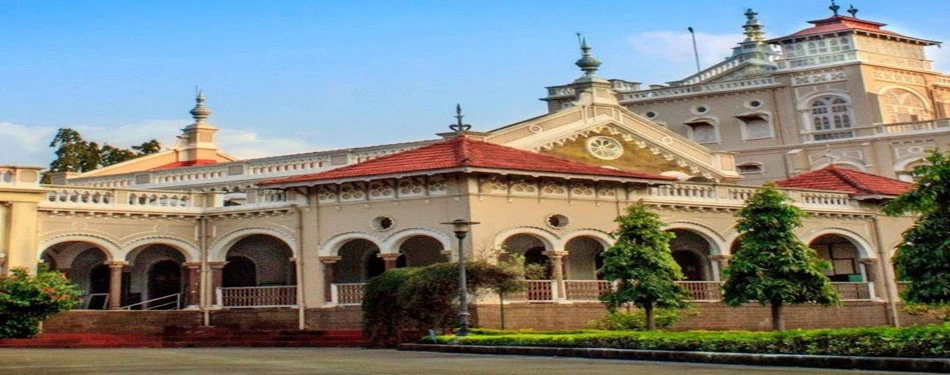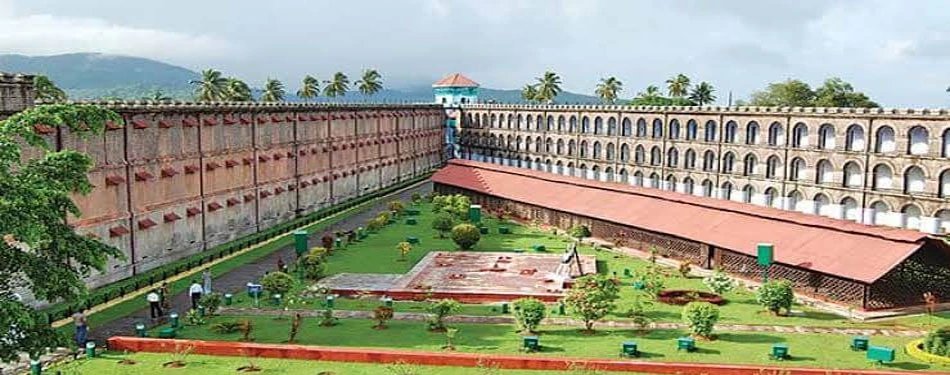The Rich History Behind Andaman and Nicobar Iconic Monuments

The Andaman and Nicobar Islands, a breathtaking archipelago located in the Bay of Bengal,
are not only renowned for their pristine beaches and lush greenery but also for their
profound historical significance. The rich history of Andaman and Nicobar is intricately
woven into the fabric of its iconic monuments, each telling a story of courage,
resilience, and transformation. In this exploration, we delve deep into the history of
Andaman, unveiling the historical facts of Andaman and highlighting the famous monuments
of Andaman that stand as silent witnesses to the passage of time.
Cellular Jail: A Proof of Resilience

One of the most famous monuments of Andaman is the Cellular Jail, often referred to as
Kala Pani. Constructed during British colonial rule in the late 19th
century, this
colossal structure was originally designed to exile political prisoners from the
mainland of India. The architectural design of the jail reflects the punishment intent
of the British, with its massive walls and isolated cells meant to break the spirit of
the inmates. The history of Andaman is deeply marked by the tales of those who were
imprisoned here, including prominent freedom fighters like Veer
Savarkar and Batukeshwar
Dutt. The Cellular Jail stands today not only as a key historical site but
as a strong reminder of the struggle for India’s freedom. Its inclusion in narratives about the rich
history of Andaman and Nicobar shows the resilience and sacrifices associated with the
island's colonial past.
Japanese Bunkers: Echoes of World War II

Dotting the landscape of the Andaman and Nicobar Islands are several Japanese bunkers,
silent remains of World War II. These concrete structures were built by the Japanese
forces during their occupation of the islands from 1942 to 1945. Located strategically
across the islands, including at Ross Island and Corbyn's Cove Beach
, these bunkers provide a
haunting glimpse into the wartime activities and the strategic importance of Andaman and
Nicobar in global warfare. They are crucial to understanding the historical facts of
Andaman, especially concerning the global military tactics and the geopolitical
significance of this region during the war.
Ross Island: Colonial Ruins and Historical Echoes

Ross Island, once the administrative headquarters of the British in the Andaman Islands,
is now a beautiful tourist spot filled with ruins of colonial structures. The island
houses the ruins of the Chief Commissioner’s House, the Presbyterian Church, and a
graveyard among other structures, which collectively narrate the lifestyle and the
governance during the British era. The historical facts of Andaman embedded in Ross
Island’s architecture and layout reflect the colonial ambition and the socio-political
dynamics of the era. Today, Ross Island serves as a crucial touchpoint in understanding
the rich history of Andaman and Nicobar, offering insights into the colonial past that
shaped the present-day socio-cultural fabric of the islands.
Viper Island

Before the construction of the Cellular Jail, Viper Island served as the site where the
British used to imprison and execute Indian freedom fighters. The gallows at the top are
a grim reminder of the repression faced by those who opposed British rule. The history
of Andaman is incomplete without acknowledging the stories of bravery and the harsh
punishments meted out at Viper Island, making it an essential historical site for those
interested in the colonial history and the struggles of the native and political
prisoners.
The Anthropological Museum: A Cultural Chronicle

To fully understand the rich history of Andaman and Nicobar, a visit to the
Anthropological Museum in Port Blair is a must. The museum showcases a wide array of
artifacts, tools, clothes, and arts of the indigenous tribes of the Andaman and Nicobar
Islands, such as the Great Andamanese, the Jarawas, the Onges, the Sentinalese, and the
Nicobarese. These displays provide invaluable insights into the lives of the original
inhabitants of the islands, their cultural richness, and their interaction with the
forces of nature and colonial powers. This museum not only preserves but also celebrates
the diverse cultural heritage and the historical facts of Andaman.
Conclusion
The Andaman and Nicobar Islands, with their scenic beauty and tranquil beaches, also
boast a complex and layered historical tapestry that is captured through its iconic
monuments. Each site—from the notorious Cellular Jail to the ruins of Ross
Island—provides a unique historical perspective, adding to the rich history of Andaman
and Nicobar. These monuments invite visitors to reflect on the past and appreciate the
journey of these islands through the tides of time. As we explore these sites, we do not
just walk through remnants of structures; we traverse through the very annals of history
itself, making the journey through the rich history of Andaman and Nicobar an
unforgettable experience.